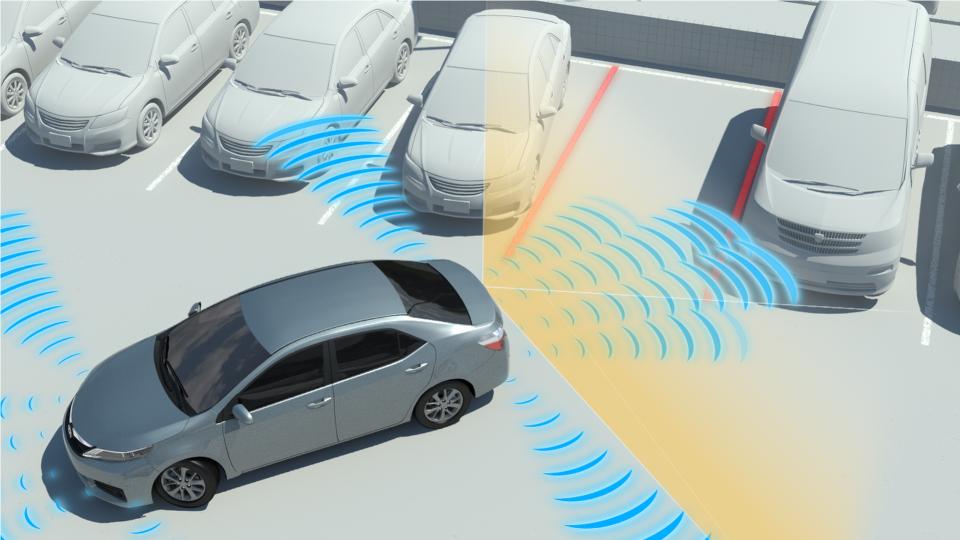
Parking sensor systems use ultrasonic proximity detectors fixed in the front or rear bumpers, to measure the distances to nearby objects at low level. The sensors works in the principle of sonar to measure the time taken for each sound pulse to be reflected back to the receiver.
Depending on the speed of the vehicle and the distance to the obstacle, the system will warn the driver by visual and/or audible alert about the risk of collision. The feedback to the driver will generally indicate the direction and proximity of the obstacle.
Sensors are usually fitted to the rear of a vehicle but may also may be fitted to the front.
Rear sensors are activated when reverse gear is selected and then deactivated as soon as any other gear or neutral or park is selected.
Front sensors are generally activated by pressing a button and then automatically deactivated when the vehicle exceeds a certain speed, this is to avoid unwanted warnings in slow moving traffic.
Audible feedback
The most common form of feedback to the driver in a car with parking sensors is audible "beeps" or tones. Generally, the frequency of the beep indicates distance from an obstruction, with the beeps becoming faster the closer the vehicle moves to an object. A continuous tone may be heard when the vehicle is extremely close, often warning a driver to stop immediately to avoid collision.Visual feedback
Some systems use visual aids instead of audible tones, such as LED or LCD readouts to indicate distance from an object. The direction and distance to the obstacle is indicated by the location and strength of the warning symbols.Drawbacks:
Since the system relies on the reflection of sound waves, it may not detect some items that are not flat or large enough to reflect sound, for example a narrow pole or a longitudinal object pointed directly at the vehicle or near an object.
Some objects may have flat surfaces that are angled from the vertical. These objects can also cause damage by deflecting the return sound waves away from the sensors causing them not to be detected.


